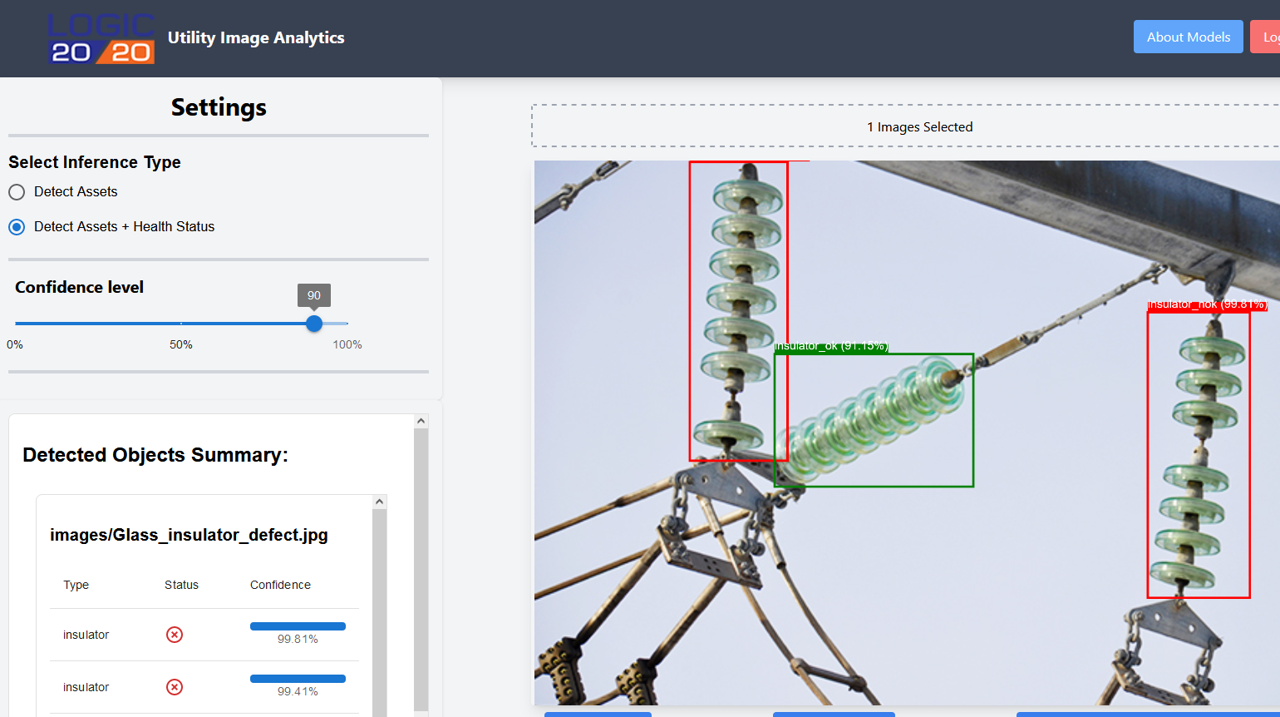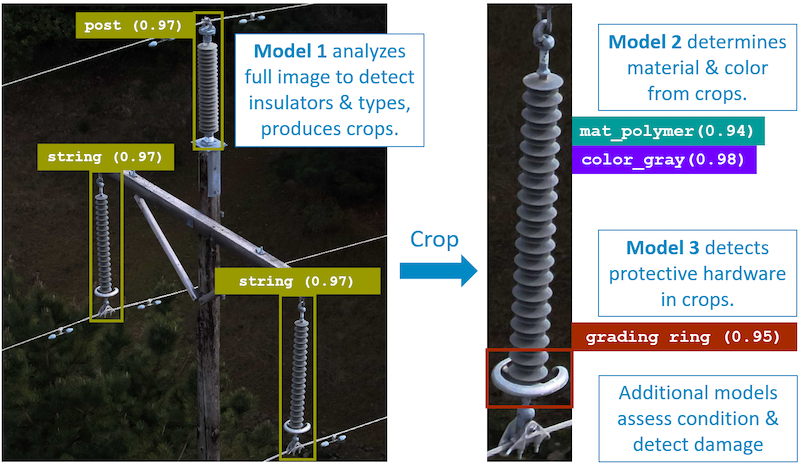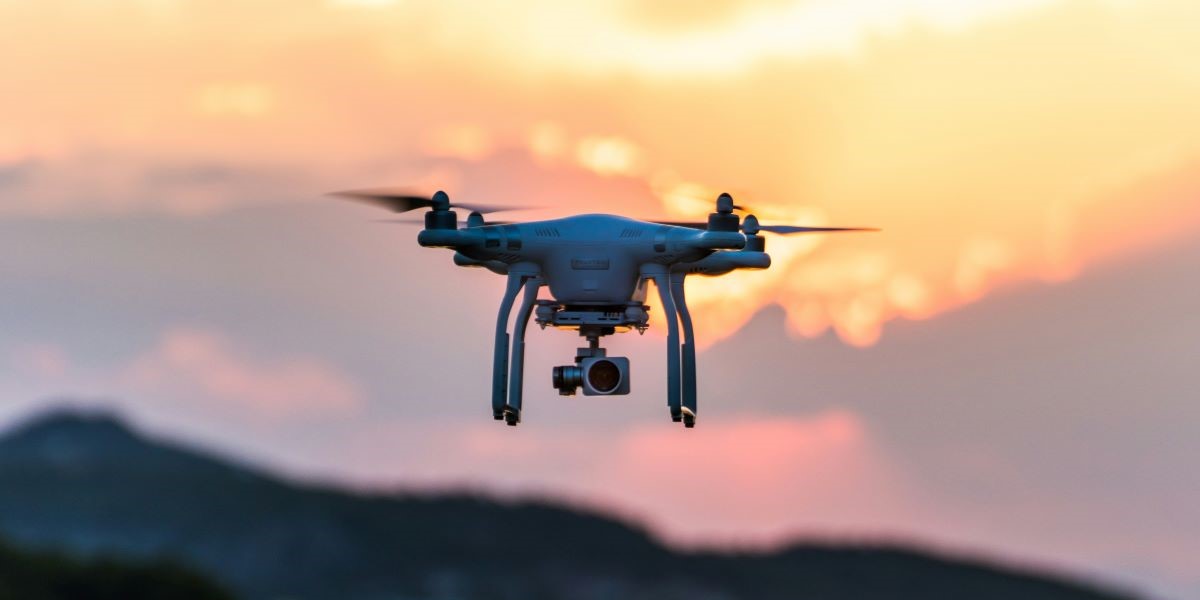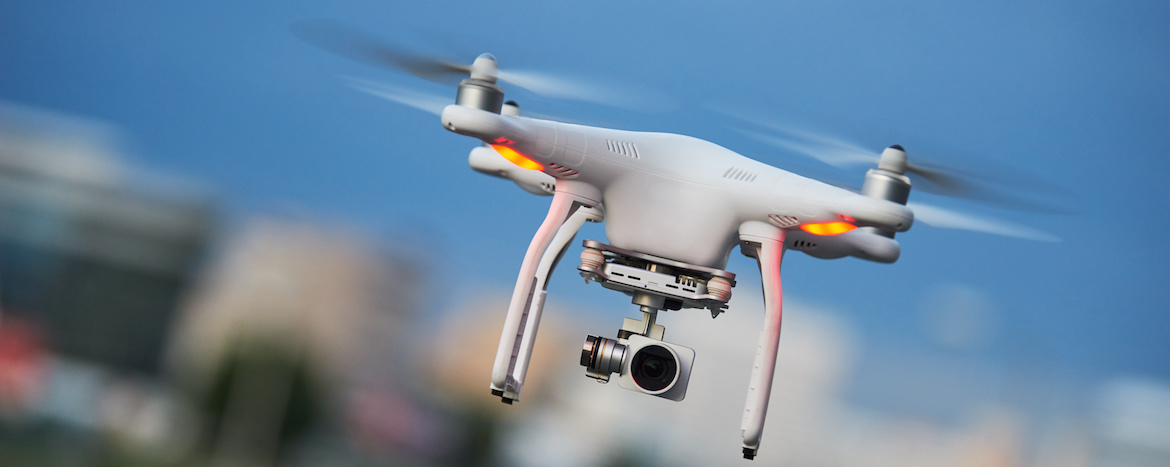5-minute read
Quick summary: Utilities are facing increasing pressures to upgrade their asset management operations, and the combination of powerline drone inspections and artificial intelligence (AI) offers an optimal solution.
Faced with an aging infrastructure, expanding regulations, and multitude of other pressures, utilities are being challenged to devote heightened attention to grid asset management, with a particular focus on inspections and maintenance. To address these challenges with limited resources, more utilities are turning to smart digital technologies. The decreasing cost and ready availability of advanced inspection drones for asset and asset management is enabling rapid, cost-efficient capture of visual data, while AI-powered platforms are making analysis of those images faster and easier for asset inspectors.
In this article, we’ll explore the confluence of pressures driving this change, the reasons why the combination of AI and drones for utility inspections offers an optimal solution, and how we’re helping one California utility optimize their own asset management operations.
The decreasing cost and ready availability of advanced drone inspection technology for utilities and other applications is enabling rapid, cost-efficient capture of visual data, while AI-powered platforms are making analysis of those images faster and easier for asset inspectors.
The evolving ecosystem of utility asset management
The asset management ecosystem for today’s utility companies is marked by a convergence of internal and external pressures.
Aging infrastructure
According to the U.S. Department of Energy, 70 percent of transmission lines are over 25 years old, the average age for power transformers is 40, and 60 percent of circuit breakers are over 30 years old. Using transmission line inspection drones can help utilities ensure reliable power flow.
Escalating climate events
In the ten years spanning 2011–2021, the average annual number of weather-related power outages increased by about 78 percent over the previous decade. As wildfires, ice storms, hurricanes, and heat waves increase in frequency and intensity, utilities are being challenged to ensure that their assets can continue to operate in severe conditions.
Weather-related failures are more than unfortunate occurrences; they can result in harsh financial consequences. In 2021, New York State Electric & Gas Corp. agreed to pay a $1.5 million penalty over its response to Tropical Storm Isaias in August 2020, which knocked out electric service to about 1 million customers for up to six days.
Increasing electrification
More Americans are turning away from fossil fuels and natural gas in favor of electrical alternatives for their vehicles and home appliances. In 2023, electric vehicles and hybrids surpassed 16 percent of total U.S. light-duty vehicle sales, and sales of heat pumps surpassed those of gas-powered furnaces for the second year in a row.
As electrification continues to escalate, the grid must keep pace with the demand if a reliable flow of electricity is to be ensured, which requires greater diligence on the part of utilities in maintaining grid assets.
Budgetary constraints
Inflation and supply chain disruptions have taken their toll on utilities’ budgets, compelling leaders to seek out solutions that let them do more with less.
Workforce challenges
With 50 percent of the industry’s workforce scheduled to retire over the next decade, utilities are seeing many qualified inspectors—and their expertise accrued over years of service—exit the company. Given the shortage of qualified personnel capable of backfilling these roles, utility companies are seeking solutions that help manage their assets with fewer people.
Article continues below.
WEBINAR
How asset image analytics supercharges utility operations
WHITE PAPER
Transforming utility operations with asset image analytics
How powerline inspection drones and artificial intelligence can fill the gaps
To help address this array of challenges surrounding asset management, utilities are turning to the combination of powerline drone inspections and artificial intelligence. Drones equipped with high-resolution cameras can capture detailed aerial images of geographically dispersed and often hard-to-reach power lines, substations, towers, and vegetation. Once collected, these images can be analyzed using AI algorithms that are trained to identify assets and look for anomalies.
Benefits of this approach include:
- Cost efficiency: Deploying powerline inspection drones is far less costly than sending out human crews to inspect every asset in a given area, and the use of AI helps utilities make more efficient use of their inspectors’ time.
- Enhanced safety: On-site inspections—especially those involving high-voltage power lines, transformers, and tall towers—can be hazardous, even when all safety precautions are taken. Drones can obtain close-up images of assets, even in remote, hard-to-reach locations, reducing the risk of human injury.
- Higher-quality data: A drone’s high-resolution camera can capture close-up images of assets in sharp detail, which enables increased accuracy over manual inspections or ground-based equipment.
- Time efficiency: Drones can cover large geographic areas in a relatively short time span, enabling utilities to inspect more assets in less time. AI capabilities offer real-time insights that enable inspectors to do their jobs more efficiently.

How we helped a California utility streamline asset inspections
Recently we helped one of our California utility clients optimize their asset inspection process by applying AI to powerline inspection drone images. Given the expanse of their service area, deploying human teams for on-site inspections was becoming cost prohibitive. They had begun deploying drones to capture images of assets, which inspectors then reviewed on a desktop computer for defections and vegetation.
For every structure inspected, the drones capture an average of 75 photos, which was requiring just over an hour for inspectors to review. Given the immense number of assets in our client’s service area and the number of inspectors available, this solution as it stood was not feasible over the long term given the high risk of human error due to fatigue.
From the beginning of the drone inspection program, our client had planned to incorporate AI into the process and eventually train computer vision models to take over parts of inspections. As a first step towards this goal, we leveraged artificial intelligence to improve their asset strategy, building training models to identify components so that inspectors can perform their reviews faster and easier, reducing the risk of fatigue-related errors.

To cite one example, the latest model we built is able to identify corona rings with a 93 percent accuracy rate. Our team is now working on applying AI to damage detection, which requires higher degrees of accuracy than identification.
A smarter future for utility asset management
As utilities grapple with an unprecedented array of challenges, from aging infrastructure to a retiring workforce, distribution and transmission powerline drone inspections and AI are emerging as beacons of innovation to enhance safety, data quality, cost efficiency, and time savings. As technology continues to evolve—and as utilities further integrate AI-driven solutions—we can anticipate a future where grid asset management is smarter, more efficient, and able to meet the demands of an increasingly electrified world with heightened resilience and reliability.
Desktop inspection portal

Asset Image Analytics
Logic20/20 leverages imagery from drones, LiDAR, satellites, and other sources and the latest in machine learning and AI to develop impactful asset image analytics solutions for:

